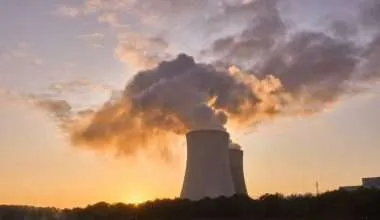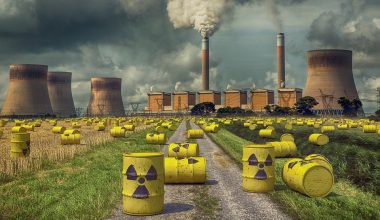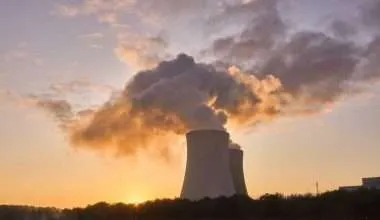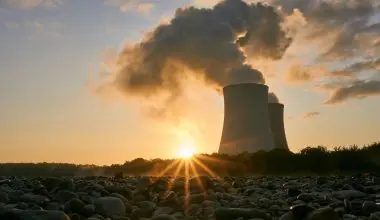Table of Contents Show
What is Nuclear Energy?
Nuclear energy is a form of renewable energy that uses the atoms of various radioactive elements such as Uranium, Plutonium, and Tungsten to convert them into energy. This form of energy is becoming more and more common as people are shifting from the traditional use of fossil fuels and other non-renewable energy resources since people have become aware that fossil fuels are either a source of widespread pollution or their stocks are running out.
Nuclear energy involves the splitting up of atoms from their strong bonds situated within them to release heat energy which heats up water to make steam that turns turbines to convert into electrical energy. This energy is released by a complex chain reaction that involves either nuclear fission or nuclear fusion.
Currently, there are over 400 nuclear reactors around the world which are producing electrical energy without any carbon emissions. These reactors are constantly working 24/7 to produce clean energy for the planet with minimal impact on the environment and ecosystems.
How does Nuclear Energy work?
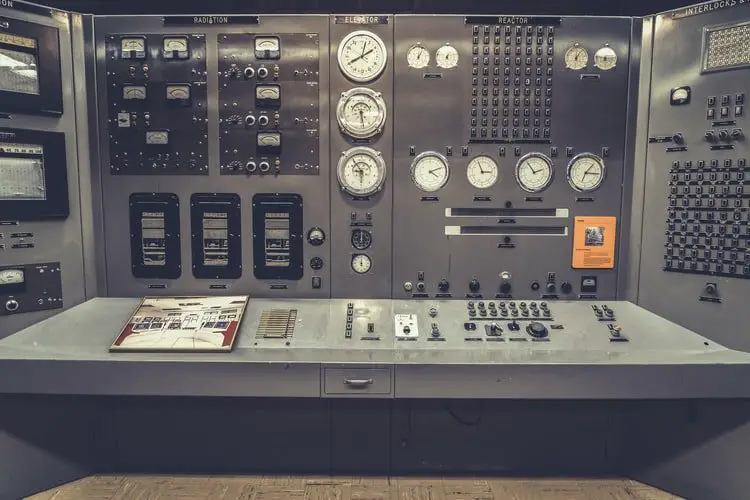
Nuclear energy works mainly on the principle of what is called Nuclear Fission.
Nuclear fission involves the release of multiple neutrons from a single atom. The atoms in an element contain potential kinetic energy and obviously some amount of radioactivity which makes these elements prone to release neutrons. This potential kinetic energy converts to heat energy when neutrons are released. Release of a single neutron generates enormous heat energy which is why nuclear reactors get so hot.
Radioactive elements are usually used to produce electrical energy from nuclear power. This is because of their unstable nature and ability to undergo spontaneous decay. This makes the atoms of these radioactive materials easy to split up to produce energy.
The most commonly used element when it comes to nuclear energy is Uranium. More specifically the isotope of Uranium which is Uranium-235 (U-235) is used. Uranium is abundant in the earth’s crust and is mined across various countries throughout the world for it to be used in nuclear reactors.
The nuclear reactors are at the heart of the nuclear power plant working constantly to make energy. Nuclear reactors are basically the main core of the generation of nuclear energy. They are concerned with controlling nuclear chain reactions to produce electrical energy. The nuclear reactors work in the same way as other power plants do when it comes to producing electrical energy. They generate heat which heats up water to produce steam which is used to rotate turbines thereby pushing the generators to generate electrical energy.
However, the only difference in nuclear plants is that they generate heat through the splitting of atoms in a process known as nuclear fission. There are various types of water reactors, but the nuclear reactors found in the United States are light-water reactors using water as a source of cooling and moderation of neutron. Millions of gallons of water are used (usually from the lake) and that has its own ecological effects on the marine environment.
Types of Light Water Nuclear Reactors
There are two types of light water reactors as well.
1. Pressurized Water Reactors (PWRs)
One is the pressurized-water reactors or PWRs. These reactors prevent the water from boiling by pumping water into the core of the reactor under the influence of high pressure. The water is then heated by nuclear fission. The superheated water is then taken by special pipes to the steam generator. These pipes carrying the heated water get hot enough to heat another isolated supply of water. This, in turn, is used to rotate the turbines. The water in the reactor is then sent back from the generator into a reactor vessel to be reheated once again. The steam within the turbine can then be cooled by a condenser to form water which is then sent to a steam generator. The steam is what turns the turbine and form electrical energy.
2. Boiling Water Reactor (BWR)
The other type of nuclear reactor is the boiling water reactor (BWR). The remaining nuclear plants in the United States work on the principle of BWR. When it comes to boiling-water reactors; water is heated and converted into steam inside a reactor vessel. The water is then pumped to the core of the reactor through pipes and heated by fission after which those pipes then feed the steam directly to the turbines which generate electricity. Eventually, the unused steam is condensed back into the water in a condenser similar to PWR.
Our two cents on Nuclear Energy
Nuclear energy is a very important resource for countries around the world and the planet. It is working to provide people with specialized jobs in operating nuclear reactors and giving employment opportunities to those concerned with the mining and extraction of elements such as Uranium. It helps give stability and security to the national interest of the countries as possessing nuclear energy is a valuable resource for any nation in the 21st century. Nuclear energy is fighting climate change by forcing nations to adapt to it and avoid methods of generating energy that harm the climate. Its minimalistic effect on the ecosystems and species living within those ecosystems help to maintain the biodiversity as organisms are not greatly affected by the harmful toxins and pollutants various other energy sources can produce.
